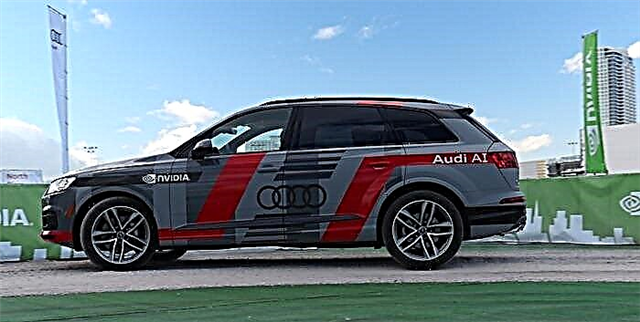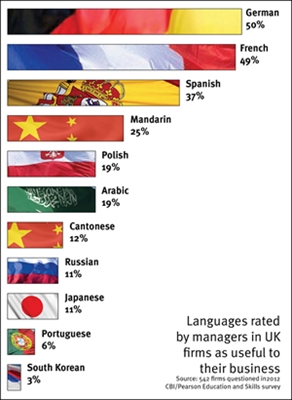The Consumer Electronic Show, or, in short, CES, is an internationally renowned exhibition held annually in Las Vegas since 1967. At it, manufacturers around the world demonstrate the latest in science and technology that ordinary mortals can successfully use in everyday life - from the latest models of smartphones and TVs to “smart” combs and drones fighting virtual lasers. The most interesting trends are presented in Top 5 of the best technical innovations at CES 2017.
5. Smartphones
 CES 2017 is not the most popular place for demonstrating new smartphones; most manufacturers seem to be saving their product presentation for the upcoming Mobile World Congress in Barcelona. However, there is something to marvel at. The externally unlikely smartphone from Asus, Zenfone AR, does not differ in a stunning stuffing, but at the moment it is the only smartphone in the world that can support the last two technologies from Google - Tango (thanks to which you can “put” a virtual object in real life) and Daydream ( virtual reality platform providing deep immersion in an imaginary world).
CES 2017 is not the most popular place for demonstrating new smartphones; most manufacturers seem to be saving their product presentation for the upcoming Mobile World Congress in Barcelona. However, there is something to marvel at. The externally unlikely smartphone from Asus, Zenfone AR, does not differ in a stunning stuffing, but at the moment it is the only smartphone in the world that can support the last two technologies from Google - Tango (thanks to which you can “put” a virtual object in real life) and Daydream ( virtual reality platform providing deep immersion in an imaginary world).
4. Laptop
 In third place in the ranking of the most interesting electronic innovations of CES 2017, gaming laptops are located. Especially good is the luxurious Project Valerie laptop from the popular gaming company Razer. This monster is not one, but as many as three screens with a diagonal of 17 inches and a resolution of 4K. The filling corresponds to an impressive appearance - the NVIDIA GeForce GTX 1080 graphics card, 32 GB of RAM and, of course, an advanced cooling system. The appearance of the prototype impressed the visitors so much that both copies were stolen directly from the stand. And Acer demonstrated the gaming laptop Predator 21 X - the first laptop with a curved screen, weighing about 8 kg. And his price will correspond to the size - 9 thousand dollars.
In third place in the ranking of the most interesting electronic innovations of CES 2017, gaming laptops are located. Especially good is the luxurious Project Valerie laptop from the popular gaming company Razer. This monster is not one, but as many as three screens with a diagonal of 17 inches and a resolution of 4K. The filling corresponds to an impressive appearance - the NVIDIA GeForce GTX 1080 graphics card, 32 GB of RAM and, of course, an advanced cooling system. The appearance of the prototype impressed the visitors so much that both copies were stolen directly from the stand. And Acer demonstrated the gaming laptop Predator 21 X - the first laptop with a curved screen, weighing about 8 kg. And his price will correspond to the size - 9 thousand dollars.
3. TVs and monitors
 Judging by the results of CES 2017, the future lies with OLED matrices. And no wonder - they are becoming more technologically advanced, bigger, thinner and, oddly enough, cheaper. One of the most interesting developments in this area was demonstrated by Sony. This is the A1E series on organic crystals, equipped with a unique sound system, where the screen itself serves as a sound source. LG showed the enthralled audience the ultra-thin Signature 4K OLED W, which is more like a wallpaper - it is only 2.57 mm thick. And the screen itself is large, with a diagonal of 65 and 77 inches.
Judging by the results of CES 2017, the future lies with OLED matrices. And no wonder - they are becoming more technologically advanced, bigger, thinner and, oddly enough, cheaper. One of the most interesting developments in this area was demonstrated by Sony. This is the A1E series on organic crystals, equipped with a unique sound system, where the screen itself serves as a sound source. LG showed the enthralled audience the ultra-thin Signature 4K OLED W, which is more like a wallpaper - it is only 2.57 mm thick. And the screen itself is large, with a diagonal of 65 and 77 inches.
2. Virtual reality
 If in 2016 the concept of virtual reality finally began to take on flesh, then in 2017, technologies naturally took the next step - in the literal sense of the word. The developers of the Japanese company Cerevo introduced Taclim boots, which, thanks to a complex system of motion sensors and tactile wires, are able to give the player to feel the structure of the surface under their feet, the sensation of jumping or hitting the enemy. Another topic of virtual reality was tried to disclose by Huawei and Lenovo, working on a virtual reality helmet, the already mentioned Asus ZenFone AR smartphone with support for the Daydream VR platform and others.
If in 2016 the concept of virtual reality finally began to take on flesh, then in 2017, technologies naturally took the next step - in the literal sense of the word. The developers of the Japanese company Cerevo introduced Taclim boots, which, thanks to a complex system of motion sensors and tactile wires, are able to give the player to feel the structure of the surface under their feet, the sensation of jumping or hitting the enemy. Another topic of virtual reality was tried to disclose by Huawei and Lenovo, working on a virtual reality helmet, the already mentioned Asus ZenFone AR smartphone with support for the Daydream VR platform and others.
1. Smart car
 The head of the list of the most interesting novelties of the CES 2017 exhibition is one of the most interesting and latest trends. Several world-renowned car manufacturers have demonstrated their achievements in the field of artificial intelligence, including such giants of the auto industry as Toyota (self-learning system Yui) and Honda (NeuV concept). Only mass production of such systems is still far away.
The head of the list of the most interesting novelties of the CES 2017 exhibition is one of the most interesting and latest trends. Several world-renowned car manufacturers have demonstrated their achievements in the field of artificial intelligence, including such giants of the auto industry as Toyota (self-learning system Yui) and Honda (NeuV concept). Only mass production of such systems is still far away.
 Against this background, Audi Corporation suddenly distinguished itself, which announced the beginning of its cooperation with the famous manufacturer of components NVIDIA. At CES 2017, the result of many years of research was presented, artificial intelligence, thanks to which the car can choose the optimal speed and the best route. And the self-learning system is able to respond to dangerous situations that occur on the road, and other emerging problems, including repair work, difficult weather conditions and railway crossings.
Against this background, Audi Corporation suddenly distinguished itself, which announced the beginning of its cooperation with the famous manufacturer of components NVIDIA. At CES 2017, the result of many years of research was presented, artificial intelligence, thanks to which the car can choose the optimal speed and the best route. And the self-learning system is able to respond to dangerous situations that occur on the road, and other emerging problems, including repair work, difficult weather conditions and railway crossings.
 The heart of the system will be the Nvidia Drive PX computer. It’s nice to know that this kind of autopilot system can be put on almost any modern car. Audi is about to start manufacturing smart cars as early as 2020.
The heart of the system will be the Nvidia Drive PX computer. It’s nice to know that this kind of autopilot system can be put on almost any modern car. Audi is about to start manufacturing smart cars as early as 2020.












